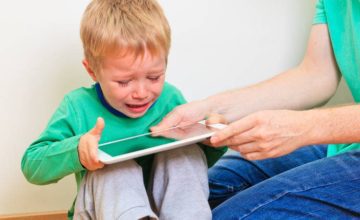New research shows that the more curious children are, the better they do academically in reading and math once they enter school.
Curiosity is at the heart of all learning. Touching something interesting… asking a question… leaning in to look closely… repeating an action again and again to see what happens… all of these are ways we use our curiosity to discover how the world works.
Curiosity drives children’s learning. In fact, new research shows that the more curious children are, the better they do academically in reading and math once they enter school. While it may seem like curiosity is something you have or you don’t, the truth is that all children are curious—and there’s a lot that parents can do to nurture a child’s natural desire to explore and learn.
Here are a few ideas to help children tap into the joy of discovery:
Practice the 5 W’s of Wondering. Look for opportunities to model asking questions and wondering together: who, what, when, where, why.
Point out changes. Noticing changes and patterns in the world around us sparks a child’s desire to “figure out” how things work. Do you see how the toast looks different than the bread? What do you see that’s different?
Allow toddlers to try and fail. Rather than stepping in with the answer every time, ask your toddler: The block tower keeps falling down. Why do you think that happens? What can we do to make it taller? Of course, you know that putting the giant rectangle block on top of the block tower means it will come crashing down. But your toddler doesn’t. Letting your child experiment in this way builds his problem-solving skills, nurtures curiosity, and helps him cultivate his “inner scientist.”
Ask children what they want to know. After you watch a squirrel running up and down trees at the park, ask your toddler: Where do you think he is going? I wonder what is he doing? What would you like to know about squirrels? While young toddlers may not have many questions to ask, as children grow, this is a great way to tap into their curiosity. You help to guide this growth by modeling your own curiosity first!
Match items and create sets. Noticing how objects are the same or different is an important skill for math and science. With your child, sort forks and spoons, big leaves and little leaves, or small rocks and big rocks. Ask your child, How are these the same? How are they different? Which one looks like this? What other things are like this? (Round, flat, soft, hard – encourage children to match items by their properties).
Follow your child’s lead. Every child is different, and the things that spark curiosity in one child are different for another. See what captivates your child’s interest and suggest, Let’s learn about this together! Find ways to connect with your child’s “inner scientist”: plant seeds with your child to discover where flowers come from; collect fall leaves to discover how trees change during the fall; fill glasses with different amounts of water, and wonder with your child why they sound different when you tap the glass.
Talk, read, sing. Engage in activities that promote back and forth conversation between you and your little learner. Find ways to stretch the conversational exchanges by using questions: What will happen next? Why did you think that happened? How will he do that? Where did he go? By engaging your little one in back and forth conversation, you will get a front row seat to what your child is wondering about.
Get out and about. Check out community resources like library story hours, local children’s events, nature centers, and children’s museums. These experiences enrich and expand children’s view of the world. They can also inspire your child’s own curiosity about animals, the outdoors, books, and more, and set them on a lifelong path of learning.
You’re the most important ingredient. The best thing parents can do to nurture curiosity and a love of learning in their child is to model it themselves. Show your child how you explore, discover, and learn. Make learning together a family activity.


